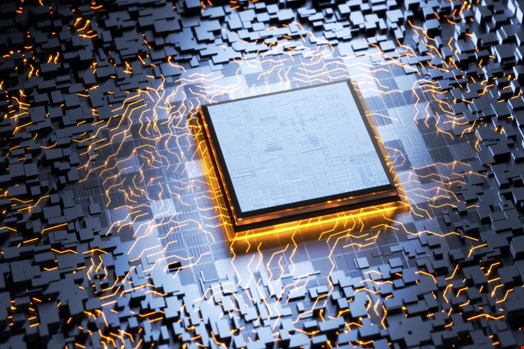As the saying goes, when one door closes, another door opens – and it’s as true for cybercriminals as it is for anyone else. Recent advances in security research have demonstrated that as more protections are built into the operating system and connected devices, attackers are looking for other avenues of exploitation – and firmware is emerging as a top target.
Alongside this, many forward-thinking enterprises are embracing generative AI technologies to streamline the effectiveness of their work operations, increase efficiency and drive better results. But as the world welcomes AI and the vast opportunities it brings to improve our working lives, businesses of all sizes must also be cognisant of the latest security considerations and arm themselves with knowledge of the risks and the avenues that cybercriminals could exploit in the new age of AI.

Firmware Security Should Remain a Priority
As operating systems, applications and cloud services become fortified with advanced security features, hackers are driven to seek out alternative vulnerabilities. Firmware, which is deeply embedded in the architecture of a device, is an attractive target for attackers due to its critical role in enabling a piece of hardware to function.
In the balance of safeguards that make up any organization’s cybersecurity strategy, firmware is often overlooked in favor of boosting cloud or identity protections, which can leave it vulnerable to attack unless devices are adequately secured, straight out of the box.
Once malware is implanted in the firmware, operating below the operating system, it can be difficult to detect due to its invisibility to traditional security tools. It can even resist attempts to remove it from the compromised device through factory resets and OS reinstalls, making it a popular option for hackers seeking to wreak havoc across a longer-term campaign. AI, for its part, can make this eventuality even more difficult to address.
Generative AI Brings a New Set of Opportunities – and Risks
Arguably, the potential applications for generative AI are truly endless and organizations are only just starting to scratch the surface as to the full capabilities of the technology. AI can generate content, autonomously conduct data analysis, identify themes and patterns invisible to the human eye and apply real-time decision making, among many other things. However, as with the process of integrating any form of emerging technology within an organization, AI comes with its own set of security concerns and implications and must be applied carefully.
As generative AI systems continue to evolve and increase in sophistication, so too do the attacks seeking to target and exploit them. AI is particularly reliant on large data sets and algorithms, which, when prompted to do so, can allow it to manipulate vast amounts of data, produce convincing deepfakes to defraud visually or execute automated attacks. As AI becomes more refined, attacks will become more difficult to detect and performed with even more complexity, making defending both the organization’s data and its devices paramount.
Furthermore, in the hands of the attackers directly, machine learning algorithms can be trained to identify and exploit vulnerabilities across an organization’s network. Once the preserve of only the most skilled hackers, successfully intruding into an organization’s infrastructure, breaching its systems and evading detection is now only elevated by AI. To safeguard their businesses and clients, therefore, organizations must be proactive in addressing the emerging security threats posed by this developing technology, both from its use inside and outside their operations.
Challenges in Managing Device Firmware
One of the key obstacles in firmware security is managing the complexity around diverse hardware ecosystems. Device manufacturers regularly release updates and patches to address known vulnerabilities or boost security. But whether it’s insufficient coordination between device makers, incompatibility issues or a lack of standardization across policies and procedures, pushing out firmware updates can be fraught with challenges, which in turn, limits the manufacturer's ability to mitigate threats and leaves organizations open to exploitation.
Additionally, many organizations struggle to comprehensively monitor the firmware status of devices in their network. This visibility barrier can leave the door open to potential threats, with devices that fall behind on firmware updates becoming easy targets for attackers exploiting known vulnerabilities with the help of automated tools.
A Unified Approach to Firmware Protection
To combat these challenges and tackle emerging and continuously evolving security threats, organizations must employ a unified approach to firmware protection. Key to this is ensuring your approach is coordinated and centralized under a single ecosystem, which enables security teams to gain greater control and visibility over their devices. IT teams can therefore monitor the status of all devices comprehensively and deploy all necessary updates promptly to keep the business secure.
Communications between hardware manufacturers and organizations can also become more efficient, especially if they invest in security solutions that provide real-time monitoring, proactive protection, anomaly detection, remote management of hardware components and automated update deployment. Tools such as these, offering chip-to-cloud security can significantly enhance an organization’s ability to detect and respond to threats targeting them across the multiple layers of hardware, firmware, software, OS and cloud, thereby reducing the window of opportunity for bad actors drastically.
As the cybersecurity landscape continues to evolve at a rapid pace and shows no sign of abating now that the age of accessible AI is upon us, firmware security has become an increasingly critical concern for businesses deploying devices to support the demands of hybrid working. The rapid adoption of generative AI technologies further compounds the need for a comprehensive and resilient approach to security, but as long as teams are armed with the confidence, control and protection they need to secure their devices, organizations can be safe in the knowledge that their critical assets are safeguarded, from chip to cloud.
